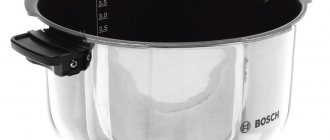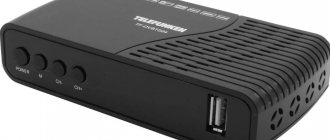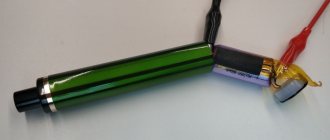When choosing headphones, the buyer wants to get a device with clear and pleasant sound. But for this, before purchasing, they study all the parameters. The impedance of the headphones plays an important role - this is an indicator of the total input impedance of the gadget. The user will have to learn how the operation of an entire acoustic system depends on the resistance indicator, what it affects, what value the impedance should have depending on the characteristics of the sound source.
What is headphone impedance in simple words
In practical terms, impedance is the total resistance measured at the gadget's input. This definition is given by Wikipedia.
Each acoustic device, as well as a smartphone, a computer with built-in speakers, and a home theater system, has an amplifier at the output. It generates fluctuations in the output voltage. They cause the speakers to emit output waves. For different types of devices, the output voltage indicators differ. Headphones are connected to this technique. For normal operation, they must have a specific value of reactive and active resistance for various frequencies. Impedance is the average of a combination of these numbers.
Whether a person listens to vocals or instrumental music, or uses wireless models for sports, modern headphones adjust to the required volume due to impedance. It affects their sensitivity, and therefore their volume.
What does headphone impedance mean?
Now let's take a closer look at what resistance means. In fact, this is one of the technical parameters that ensures the correct operation of sound-reproducing devices. The lower the resistance, the greater the acoustic power of a particular brand of headphones. Impedance is measured in Ohms, as mentioned earlier.
The technical indicator impedance divides the headphones themselves into two types:
- High resistance - the resistance of this type is usually higher than sixty ohms
- Low resistance - resistance from thirteen to thirty-two ohms
But here it is important to note one nuance - headphones also come in-ear, full-size. And these categories will have their own kind of resistance. Let's give an example:
- Full-size headphones set a certain bar for headphone impedance. Less than a hundred ohms will be considered low impedance for them. Those over a hundred are tall.
- In-ear headphones: low impedance for them means no more than thirty ohms. Any specialist would call those whose resistance exceeds the permissible threshold of thirty as high-resistance.
When choosing them, do not ignore the impedance they have. Believe me, it is not for nothing that it is listed as one of the first in the technical parameters of the object. When choosing yours, you should pay special attention to these details:
- For portable players and computer audio cards, it is recommended to have a low impedance - in the range from thirty to eighty ohms.
- For stationary sound systems - a resistance of three hundred ohms or more.
Increased resistance is necessary in order for small membranes to cope with a fairly strong impulse from the so-called source. In this case, the ears should not be harmed. The level of interference decreases at high impedance. More specifically, in the absence of a sound source in the headphones themselves, nothing will be heard. Even crackling and clicking sounds.
IMPORTANT: For those who like to experiment, we do not recommend connecting them with high resistance to the player. Such an action will not lead to anything good. The volume will be quite low, so the entire signal will be “eaten up” by the high resistance. And the device will begin to discharge in a matter of seconds.
What is the difference between resistance and impedance
The term “impedance” is not used as a synonym for the term “resistance”. These are different concepts. The resistance of the device, which is indicated in the technical documentation, is active resistance (or resistive). While impedance is the combination of active and reactive resistance (also called total).
Manufacturers, as a rule, do not indicate the value of this indicator in the documentation. Impedance must be measured separately.
What does headphone impedance affect?
The magnitude of the impedance is reflected primarily in the sensitivity of the headphones. Users believe that sensitivity equals volume. If we are talking about speakers for a PC, then this approach is justified, because the resistance is either 4 or 8 ohms. The power of the amplifier is indicated accordingly, and the relationship between these indicators is visible.
But headphones are a device that has a number of technical features and a large range of resistance values. The relationship between the indicators is not so obvious. But high impedance eliminates signal distortion and, indirectly, the volume level.
Specialists lead the impedance indicator to power, while voltage and current are taken into account simultaneously. The lower the impedance, the higher the sensitivity of the headphones. And vice versa - high resistance means low sensitivity. This indicator also affects electric current consumption. But this is in theory. The consumer must understand what sensitivity of the device is needed and how resistance affects it.
Here's what you need to remember:
- Impedance does not affect volume, but sensitivity, as well as the maximum battery life of a smartphone, tablet or player. When connecting to a home theater or computer, there is no talk about battery life.
- Sensitivity reflects the difference in volume levels as the input signal changes.
- The higher the sensitivity, the louder the device sounds. This applies to microphones, speakers, and subwoofers.
- Not every manufacturer provides a specific sensitivity value. But reputable companies indicate it either without units of measurement, or in the form of a ratio of frequency and power.
- When a consumer changes the volume on an amplifier or sound source, he does not change the power, but he adjusts the output voltage level.
- Impedance level also affects sound quality as it can remove distortion. This applies to car audio, smartphones, and other sources.
- The resistance of the headphones affects the amplitude-frequency characteristics of the model. If it is increased, wave distortion is reduced and uniform characteristics can be achieved.
How does impedance affect sound quality?
In general, the effect of impedance follows the described rules. But there are also certain caveats that should be taken into account.
While impedance affects battery life, it is not the only factor that reduces battery life. The quality depends on the volume at which the user listens to music, and how much power is required to maintain operation in this mode. In addition, you need to consider the quality of the headphones themselves. The better the sound insulation, the less volume is required. Therefore, even with a high impedance, but when using closed-type models, the smartphone or player will work longer.
It can be concluded that:
- Single-driver armature-type headphones have a higher average resistance than other types. With them, battery life will be longer.
- Multi-driver headphones are produced with lower resistance. With them, the smartphone needs to be recharged more often.
Resistance affects the presence or absence of distortion. But the characteristics of the amplifier also play a role. If it can't supply the rated current, or the filter capacitance isn't up to par, distortion will still occur, no matter what the impedance or sensitivity of the headphones is.
Experienced acousticians say that slight distortion is inevitable. The human inner ear is designed in such a way that it itself becomes a source of distortion. For example, a person always hears the sound of stringed instruments with certain distortions.
The range of the auditory nerve is about 60 dB. So the user will not be able to hear most of the external distortions. Linear distortions resulting from changes in amplitude can interfere. And this is where impedance helps smooth them out.
Headphone and amplifier impedance
You can often come across the statement that if the resistance of the headphones and the amplifier is equal, the best combination will be obtained, because in this case, the amplifier will be able to deliver the highest power level. From a mathematical point of view, in some cases this will be the case, but in practice this is nothing more than a myth, because:
- very often in amplifiers with a resistance less than 100 Ohms there is a current limit for a load below 100 Ohms and, accordingly, with equal resistance there may not be a maximum power
- sound quality has nothing to do with the same impedance of headphones and amplifier
- lower amplifier impedance provides potentially greater damping
- lower amplifier resistance has less effect on the final frequency response
- higher resistance provides potentially lower distortion, due to less dependence on the temperature of the headphone inductor (the main advantage of current amplifiers)
What is the impedance of different types of headphones?
These devices are divided into two types - full-size and in-ear (small headphones, in everyday life they are called “plugs” or earbuds). Within each group there is an additional division. Full-size headphones are divided into low-impedance (impedance up to 100 ohms) and high-impedance (impedance above 100 ohms).
In-channel gadgets are also divided into low- and high-impedance, only the numbers will be different - up to 32 Ohms (they produce standard versions with 16 and 24 Ohms) and more than 32 Ohms, respectively.
Manufacturers usually indicate the impedance value in average form. But for in-channel models it usually corresponds to reality. But for dynamic full-size gadgets, a big difference is possible, since the value depends on the position in space, and the same device may be characterized by resistance rises in the range of 32-64 Ohms. Much depends on the specific product, its design, housing features, etc.
But this does not mean that you should necessarily look for full-size dynamic headphones with a straight impedance line. Often, to achieve this indicator, the manufacturer reduces other characteristics. In top-class models, there may be devices with large deviations in impedance values. You need to take this into account when purchasing and select a model so that it matches the resistance of the amplifier.
Wireless headphones can also be full-size or in-ear. The required level of resistance corresponds to the given rules.
There are also hybrid headphones equipped with dynamic and armature drivers. They can also be low- and high-resistance, but they are characterized by significant jumps in resistance at medium and high frequencies, so choosing them is more difficult.
High and low resistance
Based on resistance, headphones are divided into two types. The boundary is different for full-length and in-ear devices.
| Headphone type | Resistance value, Ohm | |
| Low resistance | High resistance | |
| In-canal | Up to 32 | Over 32 |
| Full size | Up to 100 | Over 100 |
How to measure headphone impedance?
Sometimes the procedure for measuring the indicator is mistakenly called impedancemetry. But it's actually the name of a diagnostic medical procedure. And for headphones, a standard resistance measurement is carried out. To obtain detailed relationships and graphs, a laboratory bench and special software will be required.
Impedance is measured in Ohms. But this does not mean that it can be determined using an ohmmeter. This is only an assumption, as if a resistor is connected to the electrical circuit instead of a real load. If the headphones are connected to a computer, then the measurement is performed by its sound card using special software.
The consumer should be aware of active resistance. You can find out how much this indicator is using a multimeter - this is a budget device that can be easily bought in an online store or borrowed from an electrician.
What type of impedance do different headphones have?
In-ear headphones
Most in-ear dynamic headphones
have a flat impedance curve and values of 16, 24 or 32 ohms have no deviations for frequencies from 20 to 20 kHz.
The graph shows frequencies horizontally, from 20 Hz to 20 kHz. Vertical – resistance (on a logarithmic scale).
Over-ear dynamic headphones
For full-size dynamic headphones
It is quite common to find an uneven impedance curve, with local rises in the low-frequency region and a slight rise in the high-frequency region.
The resistance can be equal to 32 Ohms without taking into account the reactive part (conventionally, this is 0 Hz, measured by any universal multimeter), but in practice it can be twice as high at certain frequencies.
Unevenness (rises) can indicate both resonances and design features of the emitter in a given headphone housing. So, when measuring resistance, the frequency and magnitude of the rise can vary greatly depending on whether the headphones are lying freely on the table or are put on a mannequin (in this case, the internal space of the headphones is damped).
Some dynamic headphones have no noticeable resonances or deviations. This line is conventionally ideal, but selecting headphones this way is not recommended. In pursuit of improving one characteristic, you have to sacrifice another. Among top-class headphones you can find impedance curves with both minimal deviations and significant ones. If the headphones show a narrow-band boost (in the graph above this is the Grado GS1000), then the amplifier should be selected with a low output impedance for better control of low frequencies (as, by the way, was done with the proprietary Grado RA1 amplifier).
Isodynamic (orthodynamic) headphones
the isodynamic type of emitter is now becoming widespread
(and its similar type - orthodynamic). These headphones always have a straight impedance line. Isodynamic headphones are now produced by: Abyss, Audez'e, HiFiMan, Oppo, Fostex. In Soviet times there were TDS-5/m, TDS-7, TDS-15, TDS-16 and TDS-25 headphones. Today, modding is most often done for the TDS-7 and TDS-15 models.
Formally, this is an ideal load for an amplifier, however, in the ultra-high frequency range (megahertz and gigahertz), the resistance of some models decreases and approaches zero. Such insidiousness cannot be seen on a standard chart, and with some amplifiers this can lead to poor-quality operation.
In-ear reinforcement headphones
in-ear headphones with an armature driver looks hardly predictable
. Single-driver models have a common feature - there is always a local rise in the upper midrange (around 1-3 kHz) and in the highest frequencies. Thanks to the high-frequency boost, most single-driver armature models “sound clean” in the high-frequency region, because in this frequency range the amplifier produces less distortion.
In the low-frequency region, the typical resistance is 8, 16, 24 or 32 ohms. Above 500 Hz rises begin. If a resistance of 100 Ohms at 1 kHz is indicated, this does not mean that the headphones are high-impedance; their resistance may be only 16 Ohms according to the readings of the multimeter (in the low frequency region).
Hybrid and multi-driver headphones
It is impossible to predict the impedance curve for multi-driver
and
hybrid in-ear headphones
. The impedance curve can be anything above 500 Hz. The resistance drop can easily reach 4 ohms with the stated 100 ohms at 1 kHz.
General conclusions
- The resistance in reality will be the same as on the box
if the headphones are:
In-channel dynamic
or
isodynamic - The resistance in reality will be like on the box and have unknown rises
if the headphones are:
Dynamic on-ear
and
full-size - The resistance in reality will NOT be the same as on the box
if the headphones are
armature
or
hybrid
Why actually know all this?
Sometimes manufacturers of amplifiers and players indicate what headphone impedance will be compatible and it is useful to rely on this information. If you need to find out the real resistance of armature or hybrid headphones, you can try searching for measurement results on the Internet. Methods for measuring impedance usually give a single result and do not depend on the software with the stand or the measuring complex.
What is the best headphone impedance?
This parameter is selected depending on which device the headphones will be connected to. For example, if it is a smartphone or laptop, then people with experience recommend buying models with an impedance value of no more than 50 Ohms. No longer necessary, since compact devices like a phone or tablet cannot provide high volume levels and adequate power.
If a consumer chooses a gadget for a smartphone, then they will have to assume that a resistance of 22 ohms will produce louder sound. The model with an impedance of 32 Ohms gives a quiet sound. But the music will play 25% longer (approximately) compared to the first example.
To connect to a computer, you need models with a value of at least 50-60 Ohms. Such high-impedance headphones can even be connected to a music center. Experienced people recommend checking the sound quality and volume before purchasing such models. To do this, the headphones are connected to the device with which they plan to be used in the future. Models that provide clear sound are not necessarily expensive; they can be products with average performance, but reliable assembly,
If specific instructions are given by the manufacturer of the speaker or smartphone, it is better to follow them. Headphones with a high impedance mean increased energy consumption, but are better protected from short circuits or overheating.
The volume level of the device is affected by sensitivity. The indicator depends on the impedance of the headphones. Therefore, when choosing a model, you need to check or measure this energy consumption indicator yourself.
Which headphone impedance is best to choose in different situations?
Since various players, smartphones and other sound systems use a certain rated power, before purchasing you should know how many ohms should be in the headphones for certain needs. We invite you to consider several of the most common options. Unfortunately, it is not possible to visually distinguish high-resistance models from low-resistance ones, only by ear and according to the specification
Optimal impedance in headphones for a phone, audio player or laptop
If you are going to listen to music or watch movies and TV series using a smartphone or compact laptop, then it makes no sense to take headphones with an impedance value exceeding 50 Ohms.
Firstly, a low volume level will not allow you to fully enjoy every note of your favorite songs. Secondly, compact devices in some cases will not be able to provide such high power - you will understand what exceeding Ohms in headphones means when the device stops working at the most inopportune moment. Low-impedance (only 8 ohms!) “ears” of the AKG K3003 will allow you to get the most out of your gadget, but high loads will quickly damage them
AKG K3003
What headphone impedance is best for desktop PCs, music systems and professional work?
Unlike their portable counterparts, larger devices with a corresponding audio amplifier offer significant capabilities and performance. In this regard, it is better to use headphones with an impedance below 32 Ohms on such equipment with caution: the likelihood is too high that the device will clearly show you what it means to not follow the rules for choosing resistance in headphones, causing a short circuit or other serious damage.
But if the packaging and specifications show a resistance of 50-60 Ohms or higher, you can safely use such a high-impedance device with a music center or gaming PC. The ultra-powerful, iconic Sennheiser HD800 with a stunning 300 ohm impedance will provide an unforgettable experience for any user
Sennheiser HD800
NOTE!
Headphones with a high impedance value, although they require a lot of energy, have a high degree of protection from short circuits, overheating or other unexpected damage.










